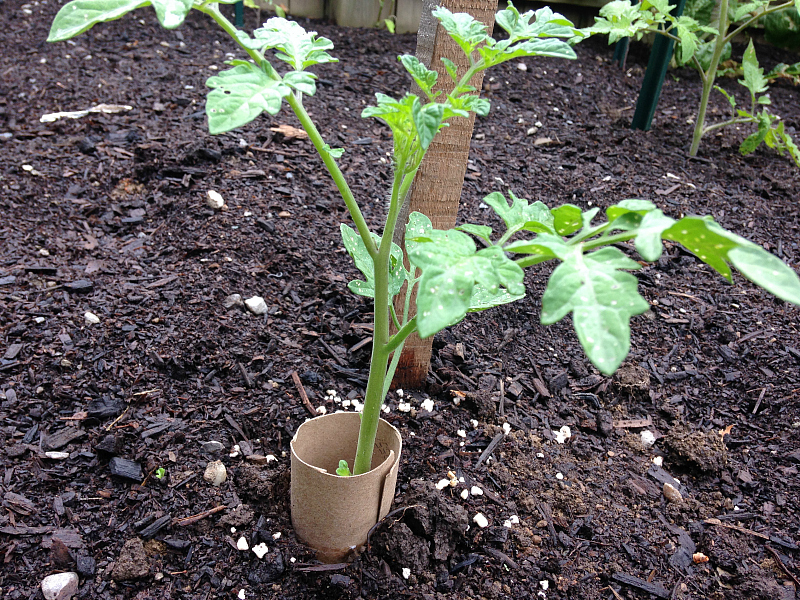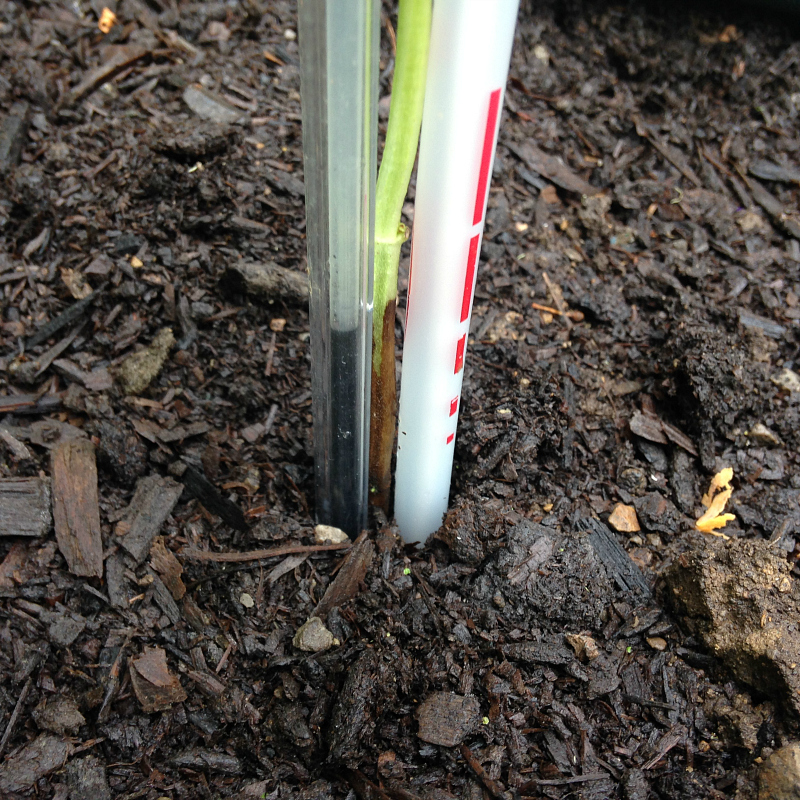
Cutworms are the soil-dwelling larvae of several different species of moth. They feed on the tender seedling stalks of many different plants, including lots of vegetables and flowers. You’ll know they’re in your garden when you come out in the morning only to discover severed or girdled and wilted seedlings. Thankfully, with a few tricks, it’s easy to prevent cutworm damage in the garden.
What Are Cutworms?
Cutworm caterpillars feed primarily at night, and young, newly transplanted seedlings are the most vulnerable. Gardeners will occasionally dig up a 1- to 2-inch-long, green or brown caterpillar when working in the garden. When disturbed, the caterpillars curl into a “C” shape.
Though these insects can wreak havoc on a newly planted vegetable or flower garden, there’s an easy way to prevent cutworm damage without having to resort to chemical soil drenches. If cutworms have plagued your garden in the past, protect your transplants with one of these five household items.
1. Cardboard Tubes

As soon as you settle tomato, pepper, sunflower and other transplants into the soil, surround each of them with a 3-inch-tall piece of cardboard tube from a toilet paper or paper towel roll. To prepare the paper tube, cut it into 3-inch sections and split it open lengthwise. Slip a tube section around each transplant, making sure the bottom of the tube is nestled into the soil by an inch or so. Cutworms travel just below the soil surface, so this prevents the cutworm from accessing the plant stalk.
2. Toothpicks

To fully girdle or sever a seedling, the cutworm caterpillar must have access to the entire circumference of the seedling’s stem. Insert three to five toothpicks vertically around each transplant, keeping them snugly against the stems and spacing them at an equal distance. The toothpicks keep the cutworm away from the stem.
3. Pencils And Used-Up Pens

Another easy way to prevent cutworm damage is to insert an old pencil or pen on either side of the seedling, making sure it’s tight against the stem. Use two pencils or pens per seedling. Again, the pencil or pen prevents the cutworm from chewing away the full circumference of the plant stem. When the seedling stem is as thick as your thumb, you can remove them. The same pens and pencils can be used for several years.
4. Metal Cans

You can also use metal cans to prevent cutworm damage. Simply remove both ends of the can and slip one can over each transplant, being sure to tuck the bottom end of the can down into the soil by at least an inch. The cans can be left in place all season long, and as an added bonus, if you coat them with spray glue and a layer of coarse sand, they’ll also keep slugs from crawling up onto your plants.
5. Yogurt Cups

If you eat a lot of yogurt at your house, there are lots of ways you can repurpose the single-serving plastic cups. I use them to grow seedlings and I cut them into pieces and use them to label my plants. But they also make great cutworm collars. To use them to prevent cutworm damage, remove the bottom of each cup and slip it over the plant, again making sure that the base of the cup is nestled into the ground by an inch or so. Like cans, the yogurt cups can be left in place all season long. You can also coat them in coarse sand to prevent slugs, too, as mentioned above.




